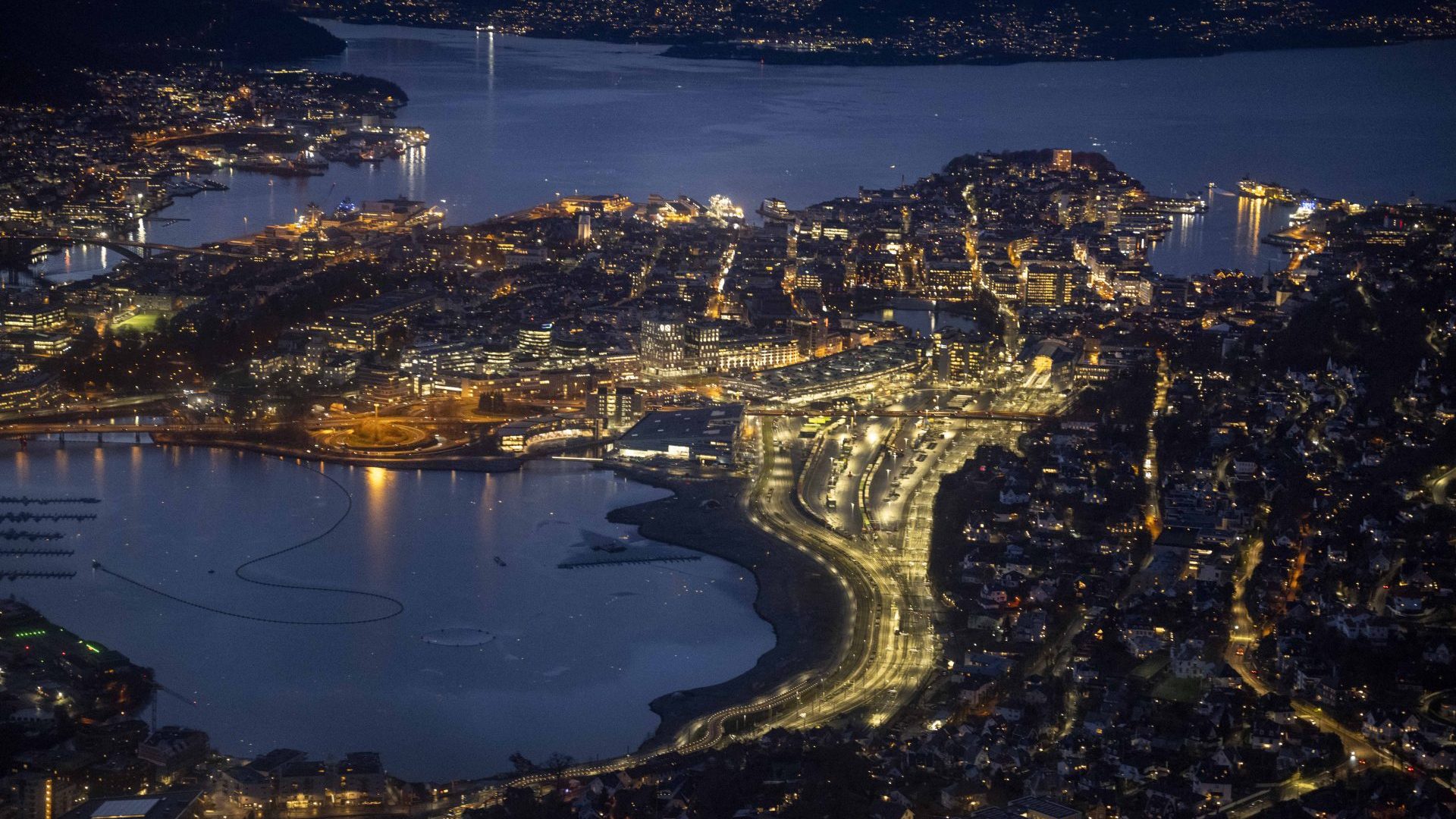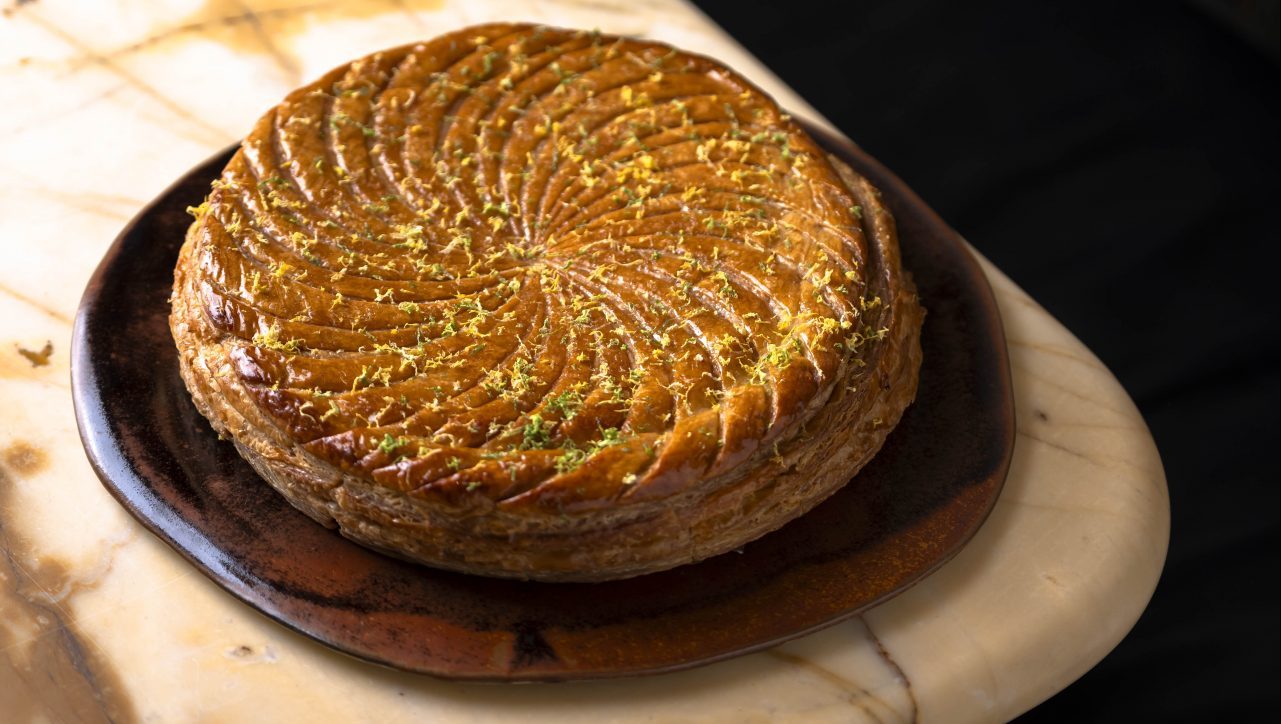Fish or meat with boiled veg, and maybe fresh strawberries in summer: that was about as good as it got when I first visited Norway as a teenager in the late 1960s. The places I stayed were largely rural and unsophisticated; people didn’t speak of cuisine, let alone the haute variety, and the potential riches of North Sea oil were little more than a rumour.
“My father would take me salmon fishing in spring, then we’d hunt elk in the forest in summer, and in autumn it would be grouse,” recalled Stig, my table neighbour at the Unesco opening dinner at the annual food festival in Bergen, Norway’s second city. Norwegians see sustainable hunting as intrinsic to the inextricable link between nature and the food chain.
Bergen has always been outward-looking and its designation as a Unesco Creative City of Gastronomy is not just about encouraging authentic, sustainable local food chains, but also forging partnerships with producers, restaurateurs and others among the 50 or so other Unesco-designated cities worldwide, eight of them in Europe.
As oil brought new wealth, Norwegians began to eat out more and even explore fine dining: Michelin judges discovered a new world north of Copenhagen. It was while eating at the Michelin-starred undersea restaurant, Under, near Kristiansand, in the south of the country last year, that I first encountered the high-quality table ciders that are among the specialities of Hardangerfjord and Sognefjord, the long sea arms that penetrate deep into the mountains that frame Bergen’s coastal position. I raised a glass with Stig as each tasting course was accompanied by a different local cider.
I later drove from the city – 200kms, several tunnels, two ferries and nearly four hours north – to visit Ciderhuset (the Cider House), a family-run orchard on the northern shore of Sognefjord. The road wove through countless neat rows of apple trees, whose ripe fruit punctuated the lush greens of the grass with brilliant flashes of red.
“Apple prices have fluctuated over the years and some farmers moved in to raspberries and strawberries,” says Age Eitungjerde, whose family business includes his wife, Eli-Grete, and son Gard, and his Turkish wife, Tuba. “But there is a long tradition of apple wine here, going back to the Middle Ages, when it was a sister product to mead. In the 1800s there were many producers in Norway and in this area the fruit wine production was really important – rhubarb, redcurrant, fortified wines…”
But, he continues: “Cider is a young product in Norway – only about ten years.” He sees the Unesco designation as the perfect partner to the region’s two “conventional” World Heritage Sites – the medieval Hanseatic port of Bergen itself, and the Fjordlands, centred on Geirangerfjord and Naeroyfjord. “This is the reason why Bergen has taken this position – more focus on food and drink is important because Norway has been a country where a lot of people have not been proud of their own products. In the last ten years there’s been a real increase in interest in local food.”
On the drinks front, though, farmers have been hindered by having to direct all sales through the state alcohol monopoly, Vinmonopolet. Although Eitungjerde still can’t sell any of his 22 alcoholic products, including an “appledram” brandy, directly to the public, he can at least now supply restaurants via a wholesaler. And this has helped Bergen and its local drinks and cuisine ease ahead of the capital, he says.
“This is why you make experiences in Bergen but not in Oslo. They are much more conscious about local products.”
I ask about the rumours I have heard about commercial vineyards in the area and am slightly surprised when he says the climate on the fjords’ steep flanks have “echoes of the champagne region”. Eitungjerde takes advantage of the long summer days to grow apricots and others, tobacco, but at Slinde vineyard, just along Sognefjord, Bjørn Bergum and partner Halldis planted their vines in 2015 and are already winning prizes in blind tastings with their organic reds.
Eitungjerde’s son, Gard, explains how, while the fjord waters act to moderate climatic extremes, the coldness of the water in Spring, after snow melt, keeps the soil cool, guarding against a false early Spring that could leave vine buds vulnerable to frost.
I pass at least one other modestly sized vineyard en route to the little community of Fjærland, which calls itself Norway’s book town and models itself on Hay-on-Wye. At Fjærland Fjordstue Hotel, the staff may be drawn from across Europe but the food is emphatically locally sourced – grown or reared within a few kilometres. Even the “risotto” is made from locally grown barley.
The City of Gastronomy project is premised upon an outward-looking attitude, which chimes with centuries-old habits in Bergen. The Lübeck-based Hanseatic League established its northern base in the city in the 14th century to control the Europewide trade in dried cod, or stockfish.
Visit the Rasmus Meyer collection at one of the city’s main galleries and you’ll quickly appreciate how Norway’s 19th-century artists built a distinctive landscape tradition by studying everywhere from London to Paris and Dresden.
Bergen and the wider region are also focussed on their green agenda – the city reckons it’s just ahead of Oslo in the electric car race, both claiming more than half of new vehicle sales are electric – and the City of Gastronomy is a key component of this. At Flåm, at the head of Aurlandsfjord, a branch of Sognefjord, I board Future of the Fjords, one of two all-electric cruise boats, each carrying 400 passengers and powered 100 per cent by hydro-power.
Linn Engø, the city’s mayor, speaking at the Unesco dinner, summed it up: “The city has made a commitment to promote the link to sustainability from the soil through to the ocean – the best for the present and future. We are developing a sustainable city and region – it brings some of our best local chefs together with chefs from Unesco’s Creative Cities of Gastronomy.”
Amanda Bahl, project leader at Matarena AS, the company delivering Bergen Food Festival and other aspects of the City of Gastronomy, tells me: “A lot of the local producers are members in our network, and we aim to support them through a range of different activities, from training in economics and social media, to giving them different tools and trainings in how they can make sustainable choices for their businesses.
“By connecting people and businesses through the network they can learn from each other and share experience between different production areas. One of the direct benefits we see is that connecting the network for restaurants with the one for local producers – it creates new opportunities for sales for both of them.”
I find many of those at the food festival offering innovative products. Marit Buttingsrud runs Hardanger Bygdeysteri, a dairy taken over by a local consortium after Tine SA, Norway’s biggest dairy products group, closed the plant in Øystese, in Hardangfjored, east of Bergen, five years ago. I try Hardanger Steikeost, a halloumi-style cheese with a touch of chilli, which cooks up pleasingly softer than its Middle Eastern inspiration. “It’s really important to have local food,” she says. “With everything that’s happening in the world and with war in with Ukraine – it’s important for people’s health too.”
Steinar Haraldstad, a former airport worker, and his wife Turid make a living on a small farm in Valdres, a highland region between Bergen and Oslo, by growing reindeer root, a perennial herb from Siberia, whose roots, shoots and leaves are rich in antioxidants and contain substances said to increase the body’s resistance to stress.
Isalin and Susanne Gjendemsjø are mixing local cod liver oil with hand-pressed extra virgin olive oil from Crete to offer a more palatable source of Vitamins A, d & E and Omega3.
Ingri Mjelde Birkeland has been seconded by Orkla, a large Norwegian conglomerate, to run Orkla Ocean, specialising in cultivating kelp off the Bergen coast. It is used as a healthier substitute for salt and in powdered form as an alternative to vegetable stock. “We started looking at seaweed as we were looking into sustainable food resources,” she says.
But it is at the more prosaic end of the food spectrum that the Unesco designation resonates. I remember at 16 being invited to chew on a piece of dried cod – I’ve been ambivalent about it ever since, unless reconstituted in bacalao. But in a demonstration of international cooperation at the festival, an Italian chef serves up a deliciously creamy pâté of stockfish, soaked in water and carefully whipped with olive oil. At Bergen fish market, the city’s traditional fishcake is a street food acquiring the status of local delicacy. Persetorsk – a dish based on cod pressed and marinated in sugar and salt – has emerged from the humble home kitchen to take its place at the gourmet table.
In setting itself up as a sustainable, future-focussed city, Bergen is building a culinary reputation that is both tourist-friendly and, perhaps more importantly, is building pride in the city-region’s culinary and agricultural heritage.



